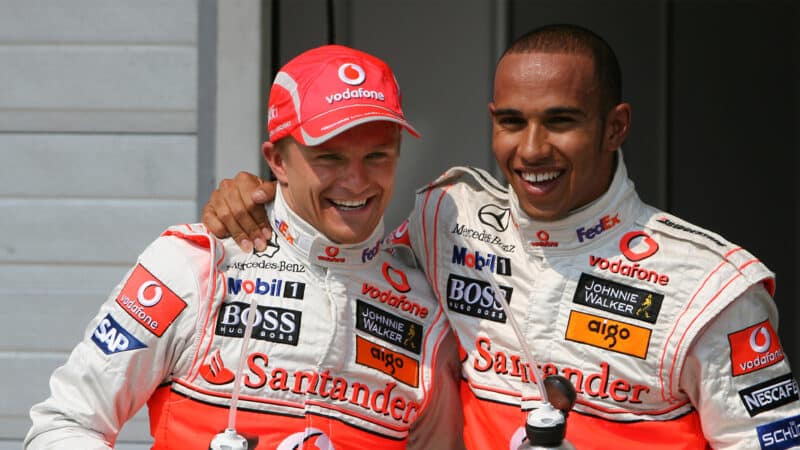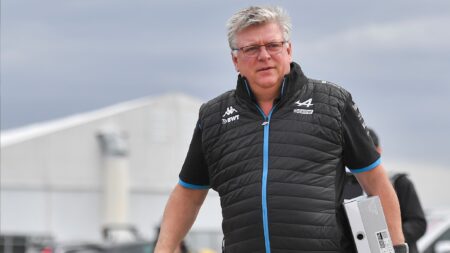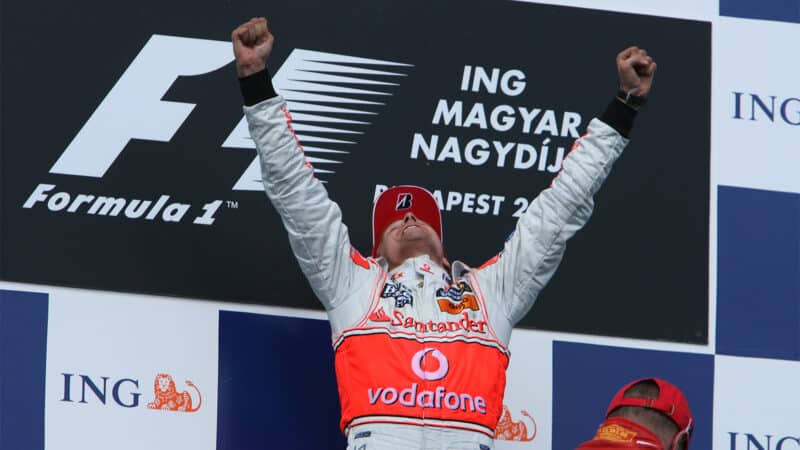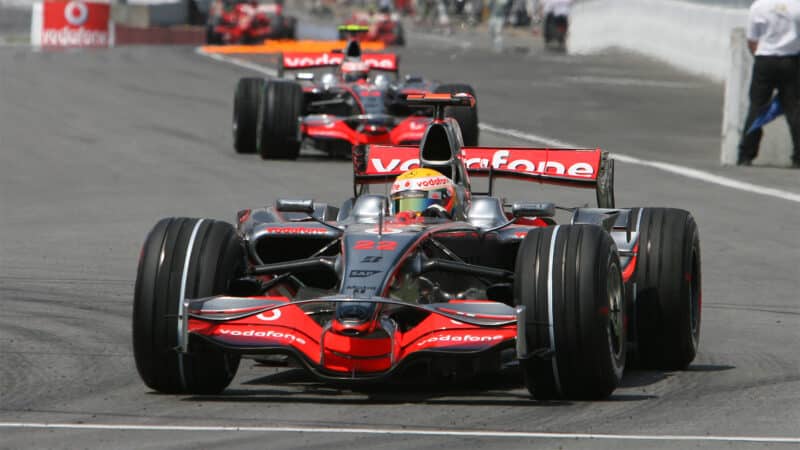We jumped into his Fiat Palio hire car and together began the short (in distance) but long (in time) journey to Interlagos. That afternoon’s Brazilian Grand Prix would be the last race of the season, and, although it was arithmetically possible that Michael Schumacher might win the drivers’ world championship, and that Ferrari might win the constructors’ world championship, Fernando Alonso and Renault were ahead in both, and the odds were therefore heavily stacked against Stepney and his colleagues. I asked him about it, and he reluctantly admitted as much. “But we’ll give it a go,” he added, then chuckled diffidently. He had reason for a modicum of optimism: Schumacher and Felipe Massa would start the race from a Ferrari front-row lock-out, while Alonso and his Renault team-mate Giancarlo Fisichella had qualified only fifth and sixth.
I changed the subject to the following season. “Do you think McLaren have done the right thing by going for Lewis [Hamilton] next year?” I asked. “He’s a rookie and he’ll be up against Fernando, which isn’t going to be easy for him, is it?”
“No, that’s right,” Nigel replied, “it’s going to be tough for him. But the rookie I’m more interested in next year is [Heikki] Kovalainen. I reckon he’s the real deal.”
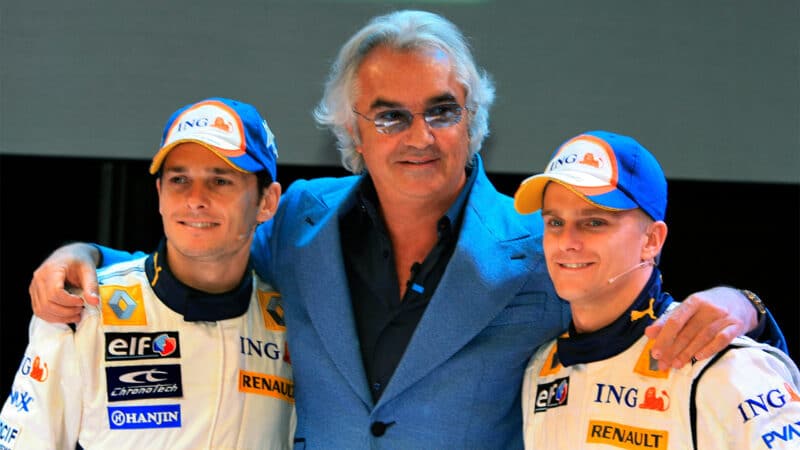
The new face of Renault – Kovalainen with Briatore and Fisichella after replacing departing Alonso in 2007
Grand Prix Photos
As you will remember, Alonso had signed for McLaren for 2007, and Renault had chosen Kovalainen to replace him. Heikki had shone in GP2 in 2005, being narrowly beaten for the title by Nico Rosberg, and he had done a ton of Formula 1 testing for Renault in 2006, clocking up nearly 17,500 miles (more than 28,000km) at Barcelona, Jerez et al. Stepney’s prediction is easy to mock now, since Hamilton has won 103 grands prix and Kovalainen only one, but it was not at the time an unusual point of view. Heikki had often been extremely impressive in F1 testing over the previous nine months, whereas Lewis had driven his first McLaren test, at Silverstone, only a month before, on 19 September, and he had tested the car just once since then, at Jerez, on October 12. (Yes, I am aware that he had also driven a McLaren two years before that, in 2004, but only 21 laps, and only on the Silverstone National circuit, and by no means in anger.)
But, yes, Stepney was wrong. In 2007 Hamilton all but won the drivers’ world championship, losing one of F1’s most fractious ever campaigns to Ferrari’s Kimi Räikkönen by a single point, whereas Kovalainen finished seventh. Nonetheless, both rookies had matched their far more experienced team-mates, Hamilton scoring the same number of wins (four) and an identical number of points (109) as Alonso, while Kovalainen had bagged a fine if attrition-enhanced podium (second) at Suzuka and had scored nine points more than Fisichella (30 versus 21), whose best finish had been only fourth (Monaco).

Hamilton (left) and Kovalainen (right). Each enjoyed successful rookie campaigns – one besting his team-mate while the other challenged for the title
Grand Prix Photos
In 2008 Lewis and Heikki would be team-mates at McLaren — and I, who started work there as communications director in January of that year, would have a ring-side seat. There is no doubt that Hamilton quickly established the upper hand, decisively so in fact, and, by the time we arrived in Budapest for the 11th grand prix of the season, almost exactly 15 years ago now, I noticed that Kovalainen was looking a little downcast. Hamilton had won the previous two grands prix, Silverstone and Hockenheim, having also won in Melbourne and Monaco, and he was heading the drivers’ world championship standings. Kovalainen was still winless. Nonetheless, Heikki was quick, no doubt about it. Although Lewis had shaded him seven-three in qualifying for the 10 previous grands prix, they had often been very close and Heikki had taken the pole at Silverstone. In Hungary they delivered a McLaren front-row lock-out, Lewis ahead.

